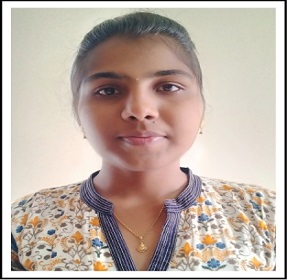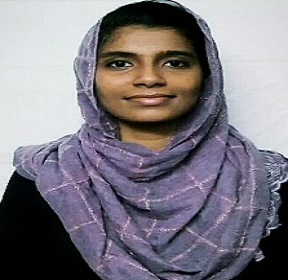Speakers
Nambirajan Jeyapalan
Coimbatore Medical College Hospital IndiaTitle: Analysis of conventional and nonconventional risk factors, clinical profile and angiographic correlation in young myocardial infarction at tertiary care centre
Abstract:
Acute myocardial infarction in the young, is an emerging health problem and require special attention in its clinical profile, risk factors and prognosis which are different from that in older patients and are more common among Asian origins. The present study is an attempt to analyse the clinical profile, conventional and non conventional risk factors and angiographic pattern of acute myocardial infarction in young individuals (<40 years of age). Total of 110 patients aged 40 years or younger who underwent coronary angiography (CAG) in the Department of Cardiology, Coimbatore medical college hospital Coimbatore between December 2019 to February 2021 were included in this study. Demographic characteristics, risk factor profile, laboratory test results, electrocardiographic and echocardiographic findings, CAG findings, and in-hospital mortality were assessed. All subjects completed the Hospital Anxiety and Depression Scale (HADS) to assess anxiety levels or presence of depressive symptoms as a potential risk factor among young patients. The mean patient age was 35.6 ± 4.4 years. Men made up 87.2% of the study sample. STEMI was present in 93.6 % of acute MI while remaining had NSTEMI. CHF (Killip class II or III) was present at hospital admission in 14.4% patients and CHF developed later during hospitalization in an additional 5.5% patients. Angiographically normal coronary arteries were found in 8.8% of patients with the diagnosis of ACS. Single-vessel disease was identified in 75.9% of patients with a positive result of CAG (stenosis >50%), double vessel disease in 11.7%, triple vessel in 3.6% patients. The most common location of significant atherosclerotic coronary lesions was the left anterior descending artery (60.1%) followed by the right coronary artery (32.4%). The most prevalent conventional cardiovascular risk factors were lipid abnormalities, cigarette smoking and an increased body mass index ≥ 25 kg/m2, followed by non conventional risk factors in form of anxiety/depression, hyperhomocysteinemia/ lipoprotein a elevation and hypertension. The findings showed that 25.5% of the respondents had anxiety caseness and 29.8% of the respondents had depression caseness. Acute myocardial infarction is rising concern among young individuals and forces burden on society. Significant risk of CHF on presentation and STEMI most common cases. Modifiable risk factors constitute primary etiology with less commonly evaluated cause as anxiety, depression and hyperhomocysteinemia/ lipoprotein a elevation need to be monitored regularly, provide regular counselling services, and plan the treatment accordingly. LAD involvement is main culprit vessel with 8% revealing normal coronaries suggesting microvascular dysfunction important process other than atherosclerosis.
Biography:
J. Nambirajan is associate professor and head in department of cardiology, Coimbatore medical college hospital, Coimbatore, Tamilnadu, India. He hold the degree of MD in General medicine and DM cardiology. He has worked as assistant professor in prestigious Madras medical College, department of cardiology, Chennai and was associated with Cardiac interventions both structural and coronary and is actively involved with teaching programme for post graduate students. He holds several publications in national and international journals and has delivered lectures at various stages. His area of special interest includes coronary and adult structural heart disease interventions, Pregnancy and Heart Disease, Pulmonary hypertension.
Pradeep kumar Pillai
University of Mumbai, India United Arab EmiratesTitle: Mechanical circulatory support in interventional cardiology and in acute cardiogenic shock – A review of current and future trends
Abstract:
The advent of mechanical circulatory support (MCS) as an offshoot of cardio-pulmonary bypass, opened up new vistas for providing circulatory support for high risk Interventional cardiological procedures. A very high degree of safety in patient care can be achieved in incorporating mechanical circulatory support for high risk patients undergoing complex interventional cardiological procedures like high risk Percutaneous Coronary Interventions, Trans-catheter Aortic Valve Implantation (TAVI/TAVR) procedures.
Another aspect of MCS is its potential for salvaging and stabilizing failing circulatory dynamics in patients undergoing acute cardiogenic shock. Advances in extra-corporeal circulation techniques and equipment alongwith revised protocols of patient care have resulted in improved patient outcomes in this critical patient category.
The presentation reviews current devices and MCS therapy regimen in use and tries to predict future trends with a view to make the procedure more effective in delivering favourable outcomes.
Biography:
Pradeepkumar Pillai is a Senior Clinical Perfusionist , currently working in the Department of Cardiothoracic Surgery, Dubai Hospital, Dubai, United Arab Emirates. He is also the current Editor-in Chief, Indian Journal Of Extra-Corporeal Technology, the official journal of the Indian Society of Extra-Corporeal Technology (ISECT). He completed his Post-Graduation in Microbiology from the University of Mumbai, India in 1999 and subsequently his cardiovascular perfusion training from Amrita Institute of Medical Sciences and Research Centre, Kochi, Kerala, India in 2001. He has about 19 years of professional experience in clinical perfusion. Among his principal interests include- Mechanical Circulatory Support, Non cardiac application of Extra-Corporeal Circulation, Pediatric and Neonatal Cardio-Pulmonary Bypass, research in life sciences ,etc
Pashmeen Lakhani
Karachi University PakistanTitle: Comparative study of medical education assessment formats (best choice questions Vs short essay questions) and Its impact on medical students.
Abstract:
The purpose of the research is to appraise Medical students’ outlook towards methods of medical education assessment methodology and whether the predilection has impacted the academic results. This cross-sectional study was conducted on 300 randomly selected medical students (Bachelor of Medicine, Bachelor of Surgery - M.B., B.S) from all accredited medical colleges from University of Karachi. The students have biased views regarding the format of assessment. Students believe BCQs are superior to online SEQs at assessing clinical concepts; 85% of students agreed that BCQs assess clinical concepts; However, only 48% believe the same about SEQs. Furthermore, the results revealed that a significant number of students 75.67% believed BCQs require a thorough studying of the course while only 52.33% of students believed the same of SEQs. Consistent with this result was that 52% preferred the format of assessment was BCQs when they had studied thoroughly. Conclusive evidence presented that students perceived the multiple choice format a better assessment of clinical concepts and problem solving skills than short essay questions. Also observed was that cramming helps more in SEQs while studying thoroughly in a course aids solving BCQs. Since the results varied meticulously between SEQs and BCQs, it is to be assumed that neither format is sufficient for complete assessment of students’ distinction in a subject. Also, an altered form of assessment has caused students to be more thorough with their courses. It is however proposed that further control trials be carried out to assess students’ examination skills.
Biography:
Pashmeen Lakhani is a Doctor by profession and works as an Educator for a Germany-based website, on creating content for medical students. She works as a writer for a non-profit. non-government organization on the project on Research Landscape in Pakistan and is a student in the BioInnovation Scientist program. Her aim is to research and devise efficient educational tools. She is an advocate of equipping future health-care professionals with knowledge on mental health. She has, till date completed over 300 Massive Open Online Courses (MOOCs), attended workshops, and webinars.
S Varsha
Sri Ramachandra Medical Institute of Higher Education and Research IndiaTitle: Comparison of quantitative troponin I with LV strain in acute MI patients
Abstract:
Objective: to compare the quantitative troponin I with left ventricle strain in acute myocardial infarction patients as assessed by echocardiography. Acute myocardial infarction is an irreversible damage due to a lack of oxygen may lead to impairment in systolic and diastolic function. According to the study a total of 50 consecutive patients of acute myocardial infarction were included. On 50 patients 39 were males and 11 were females. Cardiac troponin testing is central to the diagnosis of acute myocardial infarction. We evaluated a sensitive troponin I assay for the early diagnosis and risk stratification of myocardial infarction. The echocardiographic assessment of regional myocardial function plays a critical role in the diagnosis and management of ischemic heart disease and in most laboratories relies on the visual detection of endocardial wall motion abnormalities and assessment of left ventricular (LV) ejection fraction. troponin I concentration were measured and myocardial strain rate was calculated by global longitudinal strain method by echocardiography. patients with previous myocardial infarction were excluded. Result: there was correlation between the strain rate imaging and myocardial changes in acute myocardial infarction patients (i.e.,) lower the strain rate imaging higher the myocardial changes.
Biography:
S. Varsha is a student intern of Sri Ramachandra Institute of Education and Research, India
Syed Ali Afrin
Sri Ramachandra Institute of Education and Research IndiaTitle: Comparison of E/E' , Left atrial volume index and pulmonary artery hypertension in patients with hypertensive induced left ventricular hypotheraphy
Abstract:
Aim: We evaluated the prevalence of LA enlargement (LAE) and the relationship with left ventricular (LV) mass and diastolic function in subjects hypertensive induced left ventricular hypertrophy referred to an echocardiographic study for routine clinical indications.
Method: 100 patients underwent a comprehensive echo-Doppler examination. LAE and LV hypertrophy (LVH) were defined as LA volume index (LAVI) >29 ml/m2 and LV mass index (LVMI) >50 g/m2 respectively. Abnormalities of LV relaxation and LV filling were diagnosed by age-related thresholds of early mitral flow velocity to Ei ratio (E/Ei) ≥16, respectively.
Result: According to our study, we found that the measurement of E/Ei derived from medial mitral annulus estimated better .It also supports that E/Ei is one of the best Doppler echocardiographic parameter to estimate diastolic function. E/Ei and LAVI were estimated for patients with Concentric Left ventricular hypertrophy as well as normal patients. In our study, LAVI correlates better with Grade of diastolic dysfunction.LAVI is greater in patients with high E/Ei ratio. Age, height, weight was found to be associated with high LAVI. Other studies have shown that the older age group patients are more prone to left atrial enlargement. Patient with Diabetes mellitus (DM), hypertension (HTN) ,Chronic Kidney Disease (CKD) are associated with diastolic dysfunction, that shows raised E/Ei Therefore non-invasive tissue Doppler measurement of E/Ei can be used to stratify the risk of the patients.
Conclusion
100 Consecutive patients were included in the study and patients with Atrial fibrillation and significant Mitral regurgitation were excluded.Diastolic dysfunction contributes for Left Atrial Remodelling.LAVI increases as an expression of diastolic dysfunction More E/Ei , increase chance of getting Left atrial enlargement in advanced diastolic dysfunction coexist with pulmonary artery hypertension which eventually leads to left sided Heart failure.
Biography:
Syed Ali Afrin is a student intern of Sri Ramachandra Institute of Education and Research, India





